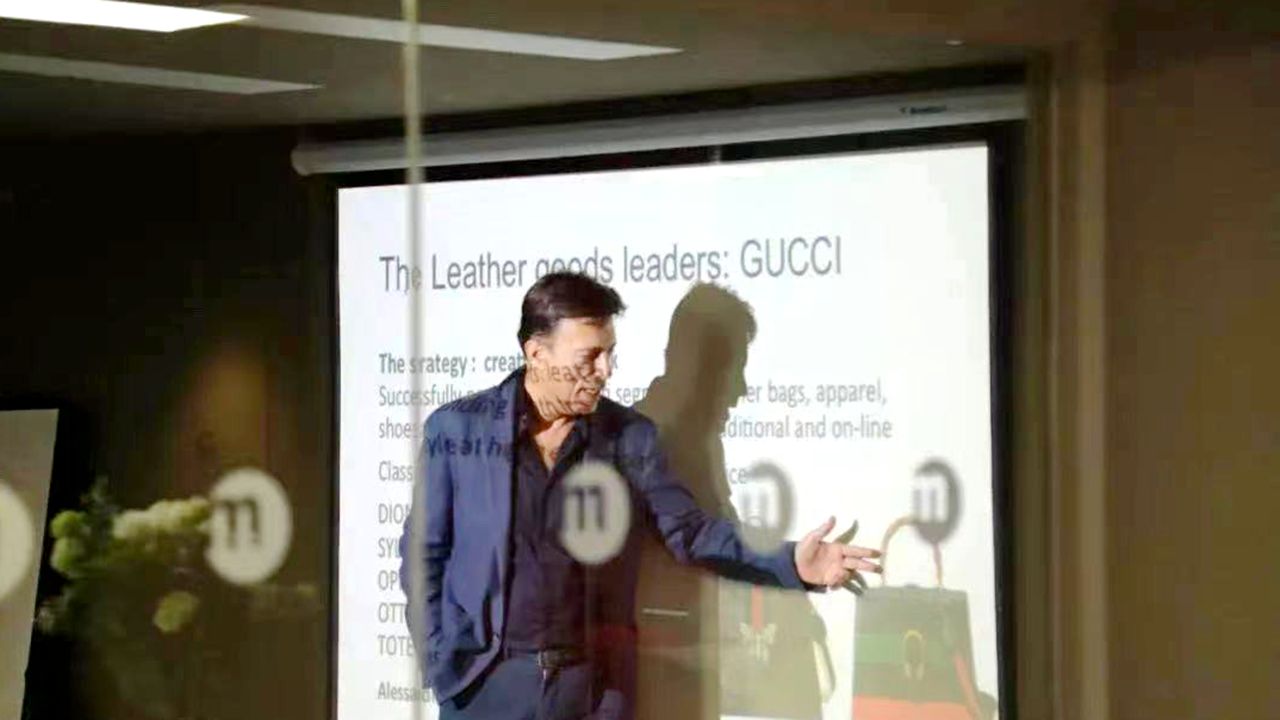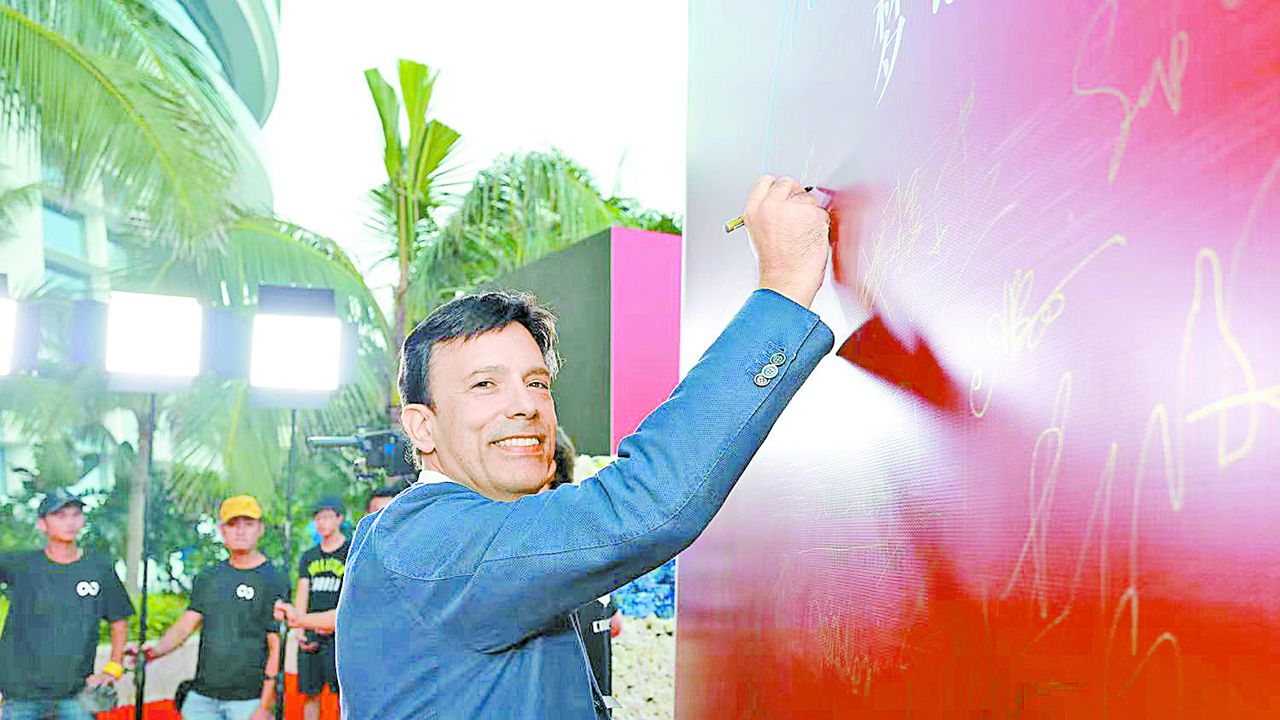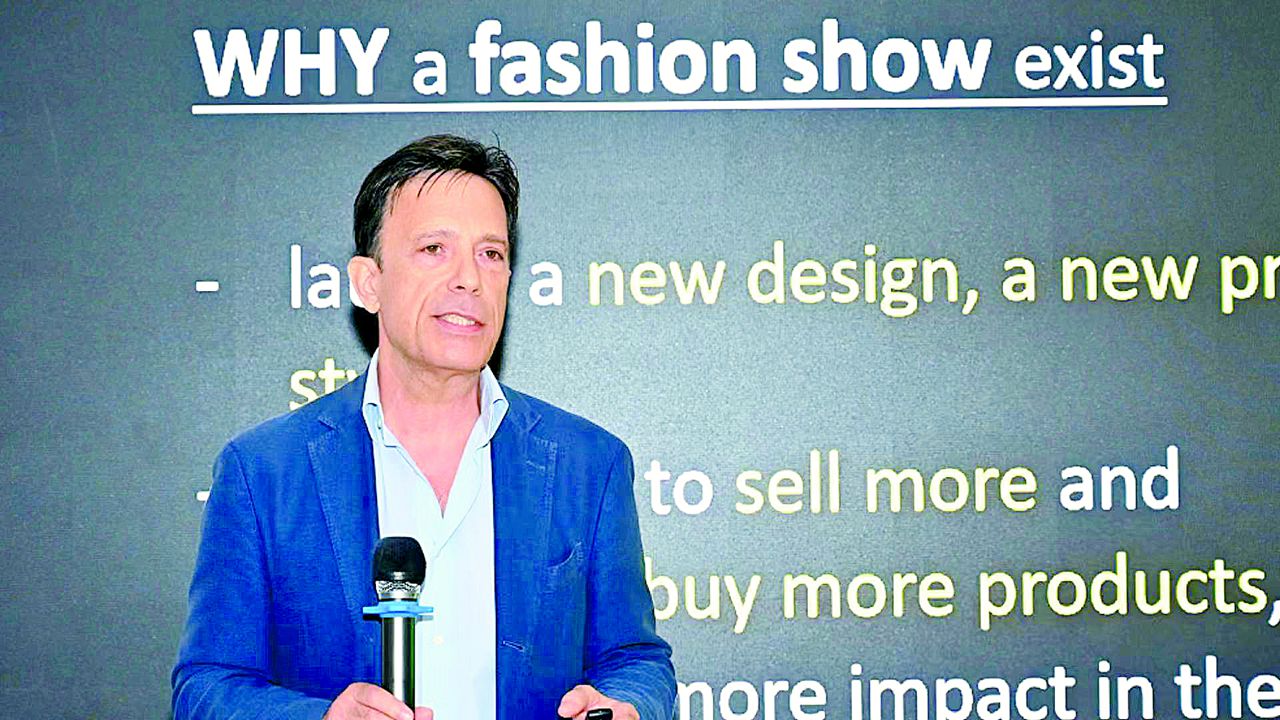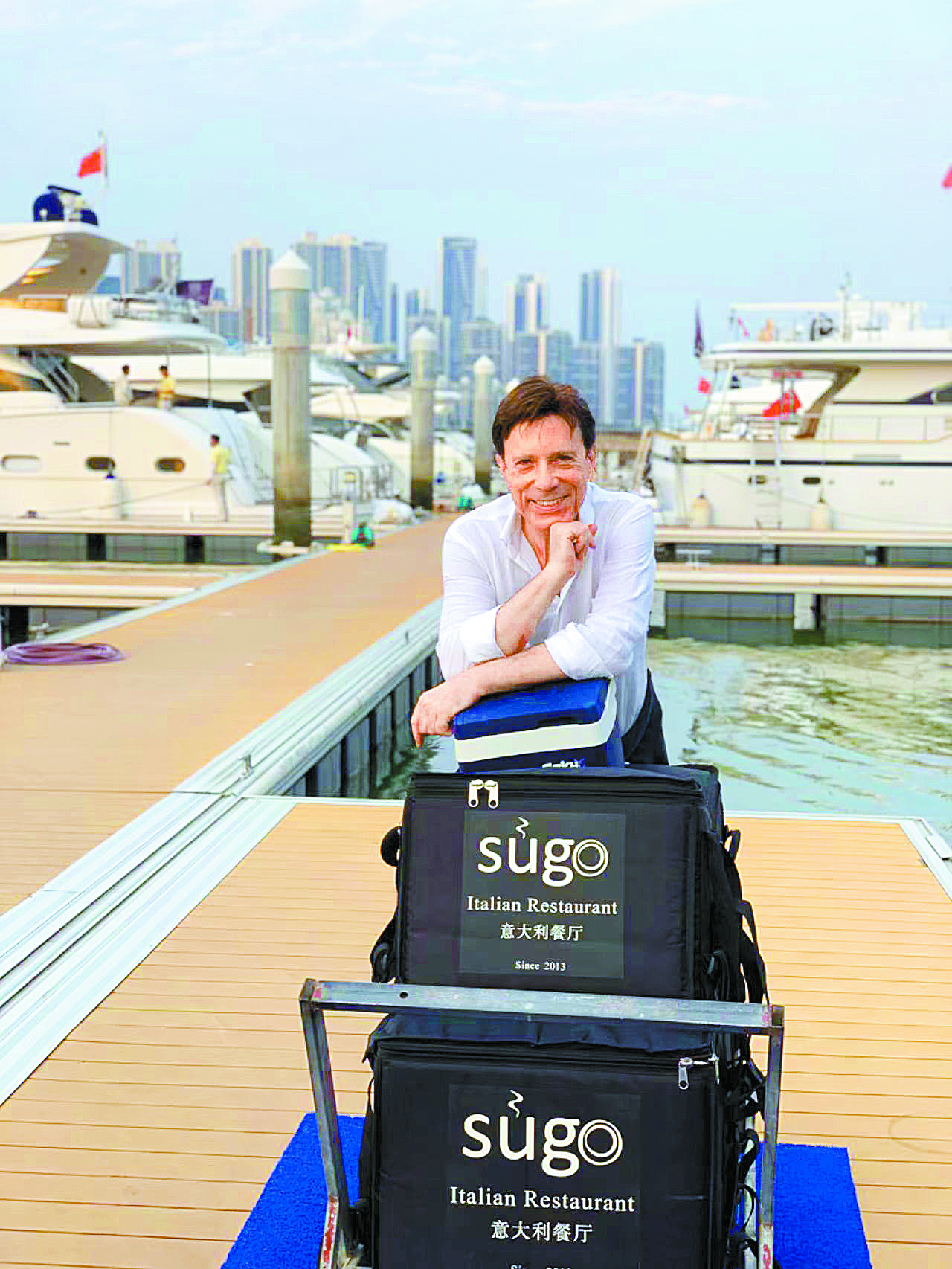Expat bridges fashion industries in SZ and Italy
Writer: Wei Jie | Editor: Nie Lumeng | From: Original | Updated: 2024-09-06
Pietro Semproni’s fashion management course was one of the most sought-after classes at the Shenzhen campus of the globally renowned fashion school, Istituto Marangoni, for its comprehensive content and valuable first-hand knowledge Semproni shared with his postgraduate students.
“His class offered solid, valuable insights that most of us lacked in the practical aspects of the fashion business,” said Sissi Lam, a student at the prestigious Italian fashion school during the 2020-2021 academic year at OCT-LOFT in Nanshan District.
Different perspective on fashion business
With an academic background in engineering and an MBA, Semproni approached fashion business from a unique perspective in his class. He emphasized to his students that working for a luxury fashion brand involves much more than just design and styling. He highlighted the importance of various other roles essential for running a successful fashion business.
With over three decades of industry experience spanning roles in operations, logistics, IT, and general management, and transitioning across sectors like office furniture, leather goods, bags, and garments in both Italy and China, Semproni began teaching a postgraduate course at the Italian fashion school in Shenzhen towards the end of 2018.

Semproni teaches at Istituto Marangoni Shenzhen. Photos courtesy of the interviewee
“The teaching experience was very rewarding,” said Semproni. His courses included topics such as supply chain, product management, purchasing, and merchandising, which are equally important to a successful fashion enterprise alongside creative design.
While his classes were engaging and enriched with case studies, some topics like supply chain involved a lot of numbers and calculations. “That was exactly what we lacked,” said Lam, who now runs a made-to-order garment studio in Futian’s Chegongmiao neighborhood.
Return to Shenzhen
An optimized supply chain reduces operational costs while maintaining high quality. Links on the chain start with raw material producers and end with the delivery of finished products to users, involving hundreds of suppliers with diverse expertise and specializations.
When Semproni joined in 2012 a leading Chinese fashion group based in Shenzhen, which owned an Italian luxury brand of womenswear, he identified significant gaps in their supply chain after conducting a preliminary audit. He developed a comprehensive reorganization plan, implementing several IT tools to address issues such as lack of communication among departments (transparency), absence of historical data (visibility), and underestimation of human resources (turnover). This implementation took nearly two years.

Semproni signs his autograph at a press conference for Redstone in 2012 when he arrived in Shenzhen to lead the reorganization of the Shenzhen-based fashion group.
Semproni’s initiatives to synchronize manufacturing with merchandising and purchasing, significantly boosted operational efficiency.
He emphasized the importance of fostering a network of suppliers and laboratories, offering fair compensation, clear order visibility, and managerial support as needed, while monitoring their progress to ensure the highest quality and optimal efficiency.

Pietro Semproni speaks at a forum at Spring/Summer 2022 Shenzhen Fashion Week.
With a complete and optimized supply chain, Shenzhen has emerged as a leader in the Chinese fashion industry. However, to achieve further growth and stand shoulder-to-shoulder with established fashion capitals like Milan and Paris, continuous innovation is imperative. According to Semproni, this innovation has been hindered during the pandemic and has not yet fully rebounded.
Career ascension
The new job offer from the Shenzhen fashion group brought Semproni back to the city nearly 20 years after his first experience in China.
“I wasn’t aware that Shenzhen had gone through such rapid development,” he said. His impression of the city was still from 1995, when he saw “numerous cranes standing out against the city’s skyline” on his way to Dongguan.
At that time, Semproni was the chief operating officer of Bologna-based Borbonese, a small but renowned brand for luxury bags and suitcases in Italy. He was on a business trip to the Dongguan factory, which he was inspecting to outsource the production of fabric bags and travel bags within the company’s evergreen articles.
“Borbonese had operated through approximately 100 subcontractors in Italy, and I started looking to outsource part of our assembly process outside Italy,” he said.
Although the transportation and quality control costs were much higher than assembly costs, Semproni had all the fabric and accessories shipped in from Italy to ensure the stability of sales volume, until they later found local suppliers for those materials.
The strategy proved successful, and Borbonese expanded its business to produce for other big names like Moschino and Romeo Gigli.
The success at Borbonese attracted the attention of Patrizio Bertelli, CEO of Prada, who invited Semproni to join the Milan-based fashion conglomerate to further develop its leather goods business.
His tenure with the Milan fashion giant sharpened his managerial expertise, particularly in handling vertical organization. Semproni noted that working with small companies like Borbonese broadened his experience across various areas.
Now at retirement age, Semproni is no longer in the fashion circle he had been in throughout his career. Instead, he focuses on the food and beverage business he ventured into 12 years ago. Together with his wife, he owns an Italian restaurant and a coffee/bakery shop in Shekou, and also provides catering services for private families and companies. As an entrepreneur, he believes Shenzhen offers an ideal environment for starting a business.

Semproni in Shekou.
In his private life, he maintains a blog about life in Shenzhen and China. “The lack of scientific reports from China in European news broadcasts created a lot of misunderstanding and bias, which I tried to reduce as much as I can” he said.